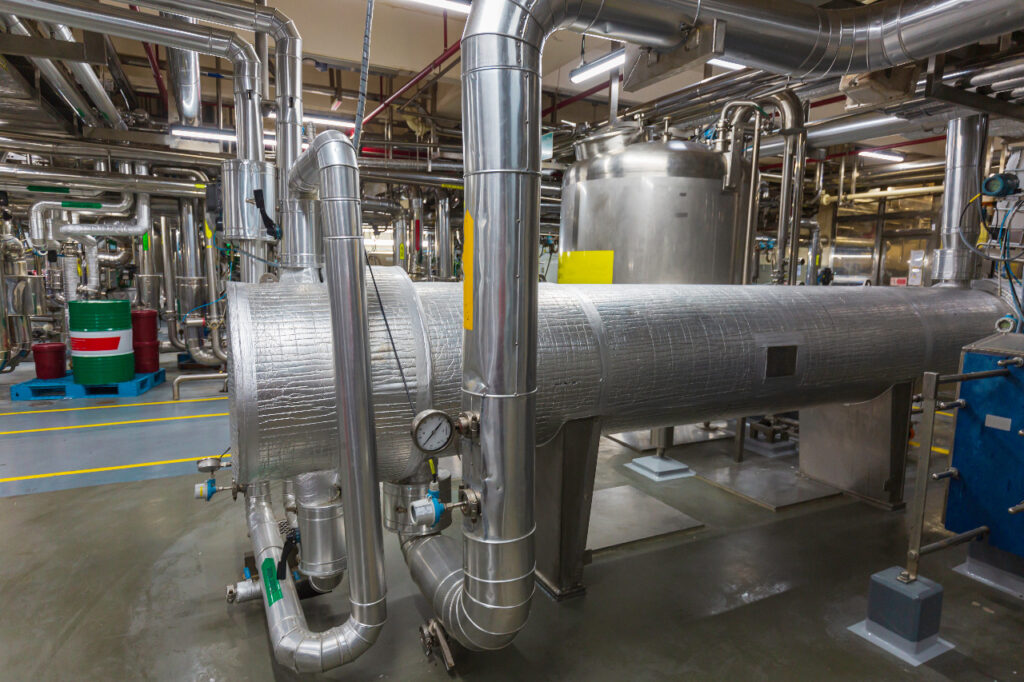Heat exchangers are successfully utilized for many years in the chemical industry in the most numerous sectors, like the cooling and heating of base, intermediate and final products, heat recovery or also the tempering of containers, reactors and autoclaves. They’re mainly utilized to transfer the heat from one fluid/gas to another. While there are a variety of applications and adaptations of the heat exchanger, here are their four typical applications:
- Cooling hot liquids
- Heating and drying
- Heating cold liquids
- Cooling and condensing
Below are the applications of the above mentioned heat exchangers in the chemical processing industry:

- AIR COOLED HEAT EXCHANGER
An air-cooled heat exchanger (ACHE), otherwise known as a finned tube heat exchanger works by passing a liquid in a series of tubes while pumping air over or around the pipe to cool down the liquid. The efficiency of these units comes from its design – the extended fins that protrude into the air/gas flow and improve the heat transfer ability of the structure.
Such type of heat exchangers are often used for heat recovery purposes to exhaust hot gases. This is done by transferring the heat in the gas to the liquid (usually water or thermal oil). ACHEs are usually used in chemical industries for applications like petrochemical cooling and steam cooling. However, since air (both hot and cold) can be reused for a variety of functions, the ACHEs can be used for a variety of applications.
- SHELL AND TUBE HEAT EXCHANGER
These types of heat exchangers work by passing the fluid/gas through a series of tubes that are enclosed in giant metal shell. You can opt to pass the fluid/gas from the sheel or tube side depending on the amount of corrosiveness of the substance as well as final state (fluid/gaseous) of the required product.
The shell and tube heat exchangers are usually used for high pressure applications as well as those which need a vacuum condition to carry out the heat transfer process. Shell and tube heat exchangers are the most popular kind of heat exchangers utilized in the chemical industry because of its containment abilities which is very useful when handling noxious or toxic gases and chemicals.
- GASKET PLATE HEAT EXCHANGER
Plate heat exchangers or gasket plate heat exchangers work by passing fluids through a series of plates that are compacted along side-by-side and are most suitable for fluid to fluid heat exchange or just in case of heat transfers from fluids to vapor.
The gasket plate heat exchanger is usually used for liquid to liquid applications and also when both liquids cannot come in contact when being processes. This works very well when operating with highly acidic chemicals or oils utilizing water, so enabling the formation of vapor which can be further used for a variety of a range.
While heat-exchangers can be classified on the basis of how they function, it can be adapted to suit a variety of processes. Therefore, it is advisable to thoroughly analyses your processing needs, the materials in question as well as the possible by-products that can be formed while using the heat exchanger. For instance, if you use a heat exchanger to cool down a chemical solution using water, the vapor that is formed post the heat exchanging process can then be used to generate thermal energy. So, be sure to keep your process requirements as well as the possible outcomes in mind before planning the design of your heat exchanger!
